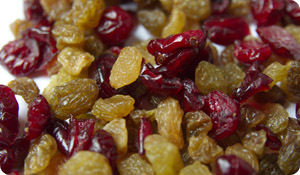
If you have diabetes, you probably use a glucose (blood sugar) meter throughout the day to make sure your insulin levels are within the recommended guidelines—between 70 to 130 mg/dl before eating, or below 180 mg/dl after meals, according to the American Diabetes Association. Blood sugar that drops below these levels is called hypoglycemia. It’s important to always have ready access to a sugary snack to treat a hypoglycemic episode.
The 15/15 Rule
An easy rule of thumb for people with diabetes to remember is to always have 15 grams (about 60 calories' worth) of carbohydrates on hand, wherever they go, says Marina Chaparro, MPH, RDN, CDE, LD, a Florida-based clinical dietitian, certified diabetes educator, and spokesperson for the Academy of Nutrition and Dietetics. She points out that the best snack choices are foods that are predominantly fast-acting carbohydrates (meaning they don’t also contain protein and fat, both of which can slow the absorption of the sugar into the blood stream). These will be most effective in treating low-blood sugar or hypoglycemia.
Once you consume the 15 grams of carbohydrates, be prepared to recheck your glucose reading in 15 minutes to make sure that the numbers are indeed going up into the normal range.
Best Emergency Snacks
Here are Chaparro’s picks for good emergency snacks for people with diabetes to address a low-blood sugar episode and help them feel better fast:
- A 4-6-ounce glass of juice or regular soda. This can be one of the best fast-acting options. The only catch is that these beverages don’t fit in your pocket so they can be harder to tote with you at all times during the day. (A 6-ounce serving of orange juice has 84 calories and almost 20 grams of carbohydrates, while the same amount of Coke has 72 calories and 20 grams of carbohydrates.)
- Three individual packets of sugar (the kind you can get at your local coffee shop). This can be an effective way to get your glucose levels up, and they are easy to fit in your pockets, too. The three sugar packets equal about three teaspoons of sugar. (Each pack is 15 calories and 4 grams of carbohydrates.)
- Glucose tablets (use to 3 to 4 of them at a time). Glucose tablets not only treat low-blood sugar episodes, they're also very portable.
- Hard candy like Jolly Ranchers. Try three pieces to raise blood sugar levels. (One Jolly Rancher has 23 calories and 5 grams of carbohydrates.)
- Jellybeans. Eating 10 to 15 of them can provide a needed boost for lagging insulin levels. While they may be too bulky for your pocket, they can be easily portioned out into a little snack bag and kept in your car, purse, or tote bag. (Each jellybean has 4 calories and about 1 gram of carbohydrates.)
- An individual box of raisins or cranberries. They're easy to carry around and come in perfect portion sizes: One small box, which is 90 to 100 calories, provides 15 to 20 grams of carbohydrates.
What to Expect
It takes about 10 minutes for these types of emergency snack foods to take effect. But Chaparro says to keep in mind that your symptoms resolve on their own timeframe. This can make it tempting to overeat the sugary snacks because you don’t feel immediate relief. Instead, she says it’s usually best to limit initial intake to the 15 grams of carbs and then wait. "It takes 20 minutes for the signal to get to the brain," she says. This means that until then, you may continue to feel low. This is to be expected and isn’t cause for alarm, as long as your numbers are going up.
However, if your 15-minute recheck reveals that your number is still too low (70 or below), then you should have another 15 grams of carbohydrates and check it again in another 15 minutes.
For High-Blood Sugar Episodes
On the flip side, if you experience a high blood sugar episode (also known as hyperglycemia), you’ll want to choose foods that are low in carbohydrates so that they don’t make the glucose levels rise even higher. Good choices for low-carb snacks (all of which have about 5 grams of carbohydrates or less) include:
- One portion of low-fat string cheese (120 calories).
- 1 slice of ham rolled up with one slice of low-fat cheese (120 calories).
- 1/4 cup of almonds (200 calories).
- ½ cup of raw vegetables such as cucumbers, carrots, broccoli, mushrooms or peppers (under 25 calories).
- 1 hard-boiled egg (70 calories).
- 2 tablespoons of peanut butter (approximately 180 calories).
Chaparro also suggests taking a walk if your blood sugar is elevated (as long as it’s still below 250), since the exercise will help your muscles to use more glucose. Drinking water can also help the cells in the body absorb glucose.
When to Seek Medical Care
When low or high blood sugar levels aren’t responding to your at-home treatment, you should always seek medical attention since this can be a life-threatening situation. And if you find yourself dealing with frequent episodes (more than one per day) of too-high or too-low blood sugar, Chaparro suggests talking to your doctor because your treatment plan may need to be modified.
Marina Chaparro, MPH, RDN, CDE, LD reviewed this article.
Sources
"Type 2 Diabetes." American Diabetes Association. Page accessed September 23, 2014.
Chaparro, Marina, MPH, RDN, CDE, LD, clinical dietitian, certified diabetes educator, and spokesperson for the Academy of Nutrition and Dietetics. Phone interview, Sept. 19, 2014.
"Macronutrients: the Importance of Carbohydrate, Protein, and Fat." McKinley Health Center University of Illinois at Urbana-Champaign. Page updated February 4, 2014.





